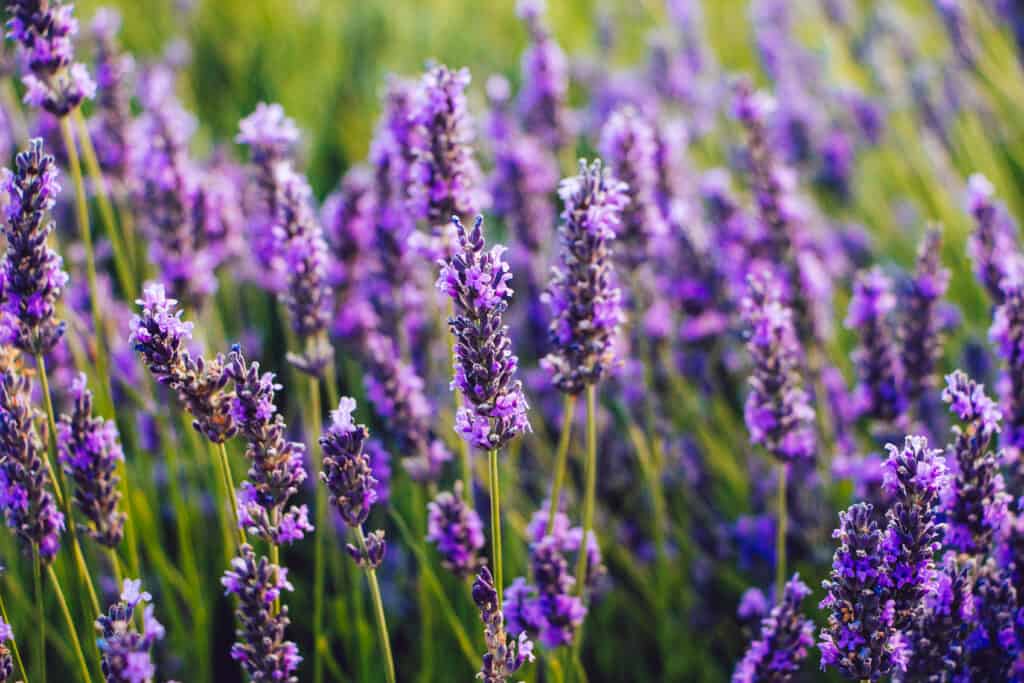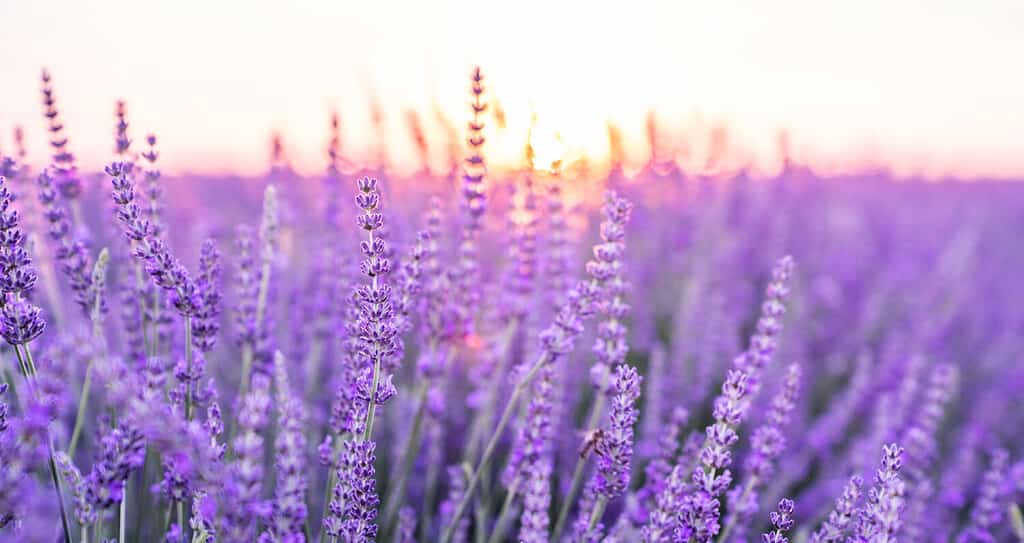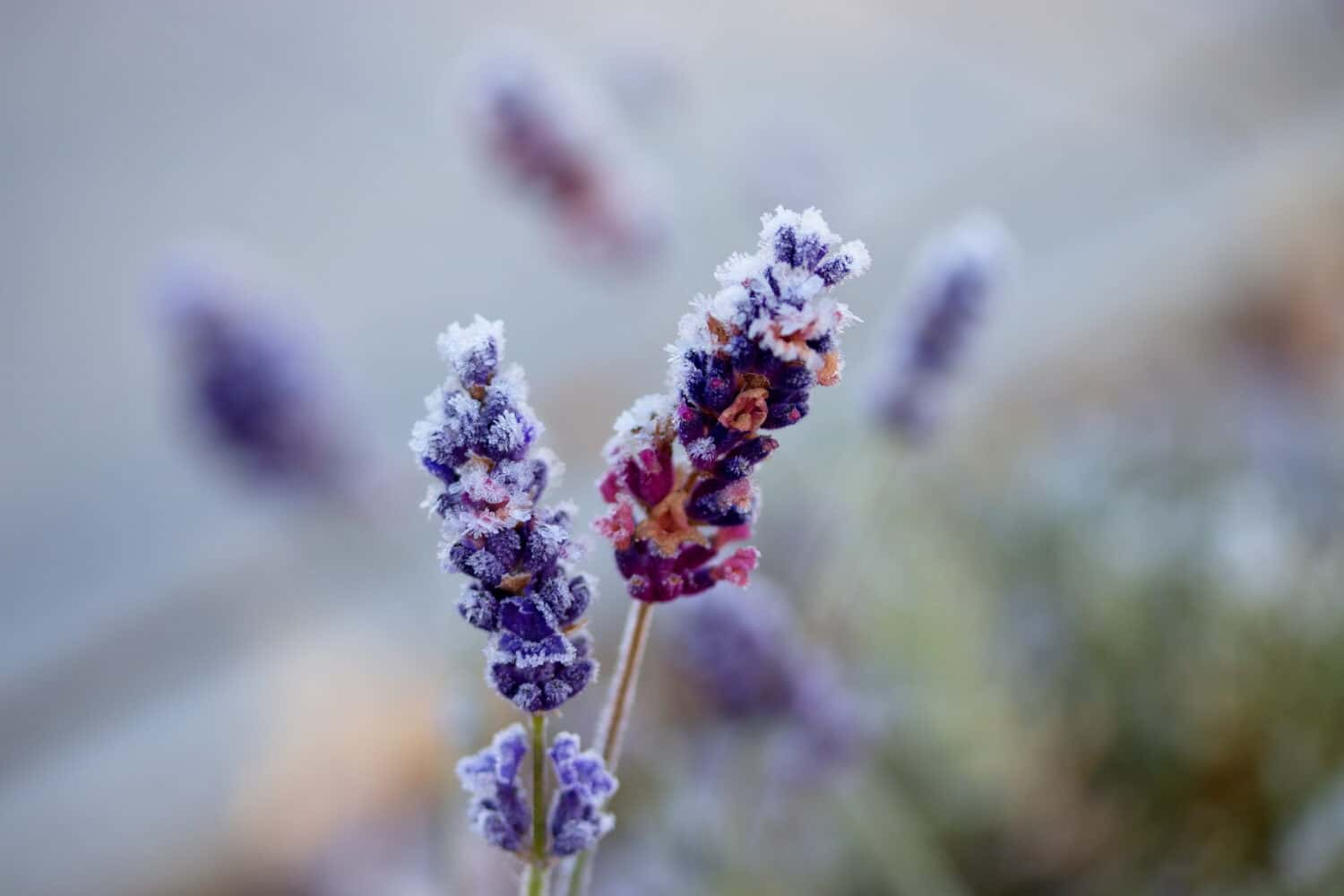Lavender is one of the most functional and beautiful plants to grow in your garden. Its delicate aroma is relaxing, attracting pollinators and improving the environment while reducing stress.
This perennial herb thrives in warm, temperate climates — but there are cold-hardy varieties that do well in wintery locales.
In this article, we’ll discuss how to winterize your lavender plants and what varieties are best for cold environments.
Let’s dig in!
Winterizing Lavender 101: Key Considerations
While lavender is a perennial that comes back yearly, it’s from the Mediterranean. In its natural environment, gardeners can trust that this aromatic herb will pop back up in the spring with minimal effort.
In colder climates, there are two main considerations when determining the best way to winterize your lavender: your USDA zone and the species.
There are almost 50 species of lavender in the Lavandula genus. There are also hybrids known as lavendin that are sold as lavender.
When choosing a cold-hardy variety, opting for English lavender (Lavandula angustifolia) is your best bet for success. These cultivars tend to survive in USDA zones 5-9. You can find successful lavender gardens as far north as Nova Scotia, Canada!
French lavender and popular hybrids like Lavandula x intermedia don’t fare well in colder climates. If you have these varieties, consider overwintering them indoors.

English lavender is considered a cold-hardy variety.
©iStock.com/ASIFE
Indoor vs. Outdoor Lavender Winterization
There are several pros and cons to consider when determining whether to overwinter your lavender indoors or outdoors.
Pros of Indoor Winterization
- Exceptional frost protection – there’s no risk of confusing your lavender species or losing your plants to unseasonable cold.
- Controlled environment – you can provide extra care and attention via grow lights and humidity control to promote blooming in the spring.
- Prolonged blooming period – your lavender may bloom longer if potted and moved indoors.
- Enjoy the benefits – lavender is often used for aromatherapy. Moving the plants indoors offers this benefit over the winter.
- Species versatility – you can grow French lavender or Spanish lavender if you plan to overwinter indoors.
Cons of Indoor Winterization
- Risk of stress – lavender can be finicky and may not like being moved, causing it to wilt.
- Space needs – you need a safe place for your lavender for the winter.
- Increased care conditions – you’ll have to monitor humidity, light exposure, temperature, pest invasions, etc.
- Cost and resources – relocating your lavender takes time and resources (extra pots, soil, etc.)
Pros of Outdoor Winterization
- Low maintenance – once you’ve completed the initial preparations, you can forget about your plants until the spring.
- Less upfront work – you won’t have to dig up plants and move them, meaning less time and resources.
- Improved lifespan – leaving lavender in its natural environment contributes to its natural growth cycle and reduces stress. Lavender also naturally adapts to its environment with proper care.
- Aesthetics – lavender foliage and stems are a lovely silver-grey color that looks nice in a winter wonderland.
- Pest control – the cold naturally kills most lavender pests that thrive in an indoor, humid environment.
Cons of Outdoor Winterization
- Risk of loss – if you misidentify your plants, experience deep cold snaps, or provide insufficient care, you could lose them.
- Moisture issues – lavender is sensitive to moisture and root rot. If you live in a humid area with wet winters, your plants may be at higher risk of dying during the cold months.
- Limited blooming season – lavender won’t bloom outdoors during the winter and may wilt early, depending on the fall weather.

French lavender and Spanish lavender should be overwintered indoors.
©Kristen Prahl/Shutterstock.com
How to Winterize Lavender Outdoors
You can overwinter your lavender outdoors if you have established, cold, hardy varieties. Here’s how:
- After the blooming season has passed, deadhead any dried lavender blooms. Do not prune back the plant at this time to allow nutrient redirection into the roots.
- If you live in USDA Zone 5, add a layer of mulch, leaves, or straw for extra insulation around the base of your plants. Wait until after the first frost to do this.
- If your plants are in their first 1-2 growing seasons, consider covering for the winter with burlap. Wait until after the first frost to do this.
Avoid fertilizing, watering, or pruning your plants until the spring. Let nature take its course.
If you get weather warnings of unseasonably cold temperature drops or extreme weather, consider adding a temporary cover to established plants.
Waiting to cover your plants until after the first frost helps trigger their dormant state. Otherwise, the added warmth may trigger your plant to continue to grow, shocking them when the cold sets in.
How to Winterize Lavender Indoors
If you have a French lavender or hybrid variety, consider moving them to indoor pots for the winter. Here’s how:
- Choose a well-draining pot and soil. Mix potting soil 2:1 with cactus soil or perlite to replicate the lavender’s natural environment. The pot should be slightly larger than the root ball.
- Gently dig up the lavender and move it into the pot. Give it a thorough watering and leave it in its usual space.
- After a few days, move the pot to an intermediate space, like a covered porch or mud room.
- After a few more days, move the pot indoors to its final location in a sunny window or under a grow light.
- Water infrequently, letting the top inch of soil dry completely between soakings.
Do not fertilize or prune the lavender plant during the winter. While it won’t bloom again during the dormant period, lavender still requires ample lighting to promote healthy spring growth.
Reverse the potting process in the spring, allowing the lavender to acclimatize before planting it. Slow and steady wins the race.
Spring Lavender Care Tips
After winter has passed and the risk of frost is gone, it’s time to revitalize your lavender plants.
Prune dead stalks back to leave room for new growth, and feed your lavender with a nutrient-rich fertilizer. Consider testing your soil and adding lime to make it more alkaline as needed.
Move away mulch, leaves, straw, or other forms of insulation to allow sufficient airflow to your plants.
Stay on top of weeding and pest control to watch your lavender come back to life!

The spring is the best time to fertilize and prune lavender.
©ESstock/Shutterstock.com
Thank you for reading! Have some feedback for us? Contact the AZ Animals editorial team.








